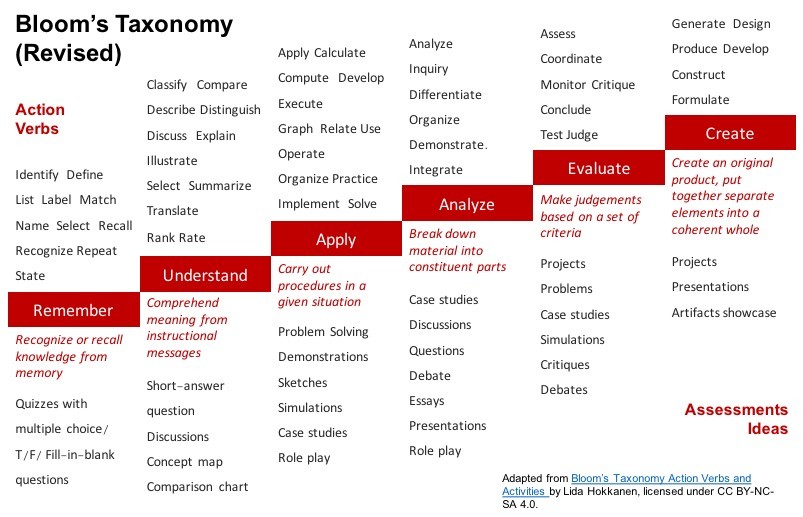Learning objectives are crucial for effective teaching and learning. They provide a roadmap for instructors and students, ensuring everyone is on the same page regarding expected outcomes. This guide delves into how to craft effective learning objectives, outlining key principles and providing actionable steps.
 Revised Bloom
Revised Bloom
The revised Bloom’s Taxonomy provides a framework for categorizing learning objectives based on cognitive complexity.
Why Learning Objectives Matter
Well-defined learning objectives offer several benefits:
- For Instructors: They guide curriculum design, inform assessment strategies, and ensure alignment between course components. They act as a compass, directing the instructor’s choices regarding content, activities, and teaching methodologies.
- For Students: They provide clarity on expected outcomes, enabling focused learning and self-assessment. Students can use learning objectives as a map to navigate the course and monitor their progress.
Characteristics of Effective Learning Objectives
Effective learning objectives adhere to the SMART criteria:
- Specific: Clearly define the desired learning outcome, avoiding vague language. Break down broad topics into manageable components with explicit expectations.
- Measurable: Use observable and measurable verbs that allow for assessment of student achievement. Focus on demonstrable actions rather than internal processes.
- Achievable: Set realistic expectations considering student capabilities, available resources, and timeframe. Align the cognitive level of the objectives with the course level.
- Result-oriented: Emphasize the desired learning outcomes rather than the learning process or activities. Describe the knowledge, skills, or attitudes students should acquire.
- Time-bound: Specify a timeframe for achieving the objectives, if applicable. This clarifies the expected pace of learning and helps determine competency.
Crafting Effective Learning Objectives: A Step-by-Step Approach
Follow these steps to create well-constructed learning objectives:
1. Identify the Learning Outcome
Pinpoint the specific knowledge, skill, attitude, or ability students should gain. For example:
- Understanding the principles of effective communication.
- Applying statistical methods to analyze data.
2. Determine the Mastery Level using Bloom’s Taxonomy
Select an action verb that reflects the desired cognitive level according to Bloom’s Taxonomy. This verb specifies the observable action students should perform to demonstrate mastery. Examples include:
- Remembering: Define, list, recall
- Understanding: Explain, summarize, interpret
- Applying: Implement, use, solve
- Analyzing: Differentiate, organize, compare
- Evaluating: Critique, justify, assess
- Creating: Design, develop, invent
3. Construct the Learning Objective Statement
Combine the action verb with the learning outcome to create a clear and concise statement. Start with the phrase: “Upon successful completion of this [course/module/unit], students will be able to…”
Examples:
- Students will be able to apply the principles of effective communication to write a persuasive essay.
- Students will be able to analyze data using statistical methods to draw conclusions and make informed decisions.
4. Refine and Review
Ensure the objective is specific, measurable, achievable, result-oriented, and time-bound. Use the Learning Outcome Review Checklist from Cornell University as a guide. Consider adding context or criteria for mastery to further clarify expectations. For example:
- Students will be able to apply the principles of effective communication to write a persuasive essay that includes a clear thesis statement, supporting evidence, and a logical conclusion.
Aligning Course Components
Learning objectives should drive all aspects of course design, including content, activities, and assessments. Ensure alignment between what is taught, how it is taught, and how it is evaluated. Misalignment creates confusion for students and hinders effective learning.
Conclusion
Crafting effective learning objectives is essential for successful instruction. By following these guidelines and using Bloom’s Taxonomy, you can create learning objectives that provide clarity, guide instruction, and promote meaningful learning experiences for students. Remember to continuously review and refine your learning objectives to ensure they remain relevant and effective.